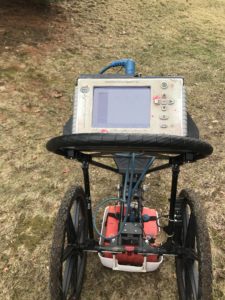Underground Oil Tank Locating and Property Sweeps in Westchester and Putnam County
When buying a home, buyers need to investigate a number of potential hazards. Most of these concerns are settled with a home inspection and following the inspectors recommendations. Beyond considering the conventional factors covered in a home in inspection, an oil tank (or property) sweep is another essential, if you do not know the history of the oil storage. An oil sweep is a procedure that determines the location of buried oil tanks, if present. Since these tanks are not visible, homeowners may not even know that they are actually there. It protects the homeowners from the risks of financial and environmental liabilities associated with leaky underground heating oil tanks. If one is found, it should be removed or at the very least the soil surrounding the tank should be sampled.
When purchasing (or selling) a property, In Westchester or Putnam County, it is imperative to know whether or not underground storage tanks (UST’s) are present. Even if a property is currently heated by natural gas, propane, above ground oil tank or current underground tank, it is important to know what other types of oil storage have previously existed. In most cases, homes in Westchester and Putnam have been heated by oil at one point since being built. This is especially true in houses built prior to 1970 (or in rural areas). Although newer houses have also relied on oil for heating purposes. In some cases, the current owners don’t even know whether a tank exists. For example, A house built in the 1920s most likely used coal for heat then oil and then natural gas. Home from the ’30s-’80s may have had heating oil than natural gas or electric.
In Westchester and Putnam County, many Villages, Towns, and Cities did not require municipal permits to install or remove tanks. This lead to many tanks be improperly abandoned. Now, most municipalities require permits and inspections for the removal and installation of oil tanks. Municipal involvement is designed to protect the homeowner to ensure the proper disposal and documentation takes place
Ground Penetrating Radar (GPR) is one of the most accurate tools used in determining if underground heating oil tanks exist at a property. Another technology is Electromagnetic Detection (ED). Barrier Contracting uses both of these technologies to identify and locate any previous and in use underground heating oil tanks or associated piping
– Ground Penetrating Radar uses radio signals to determine the characteristics of what lays underground. These signals can identify tanks, piping and various other materials beneath the surface without excavation.
– Electromagnetic Detection involves connecting a transmitter to induce radio frequency to old oil lines and using a handheld device to trace and follow them. This technology can help determine if an underground oil tank exists or has existed.
At the worst, buyers who get a new property may not even know that an underground oil tank lies beneath. So the best way to resolve the doubts and detect a tank if it is there is to collaborate with a company that specializes in this service. They search the entire area and detect an undisclosed and abandoned underground oil tank so that the owner can ideate a strategy to resolve the problem. Obviously, the next step is to remove the tank and it is desirable to find a contractor who can help with this aspect as well.

